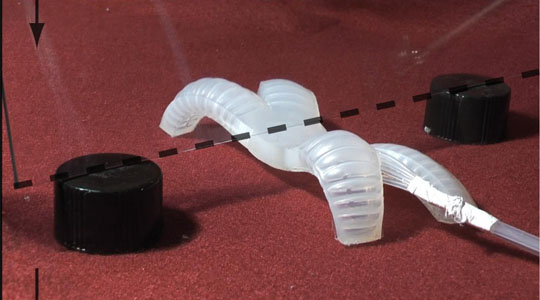
Harvard Develops flexible robot of the future
This may not look like the future of robots that we were promised in movies like Star Wars and Star Trek, but according to scientists at Harvard University and other leading researchers in the robotics field, flexible robots are the future.
They offer the ability to adapt to situations and go places that a standard model would be unable to navigate based on size restrictions. According to Matthew Walter, a roboticist at the Massachusetts Institute of Technology, “The unique ability for soft robots to deform allows them to go places that traditional rigid-body robots cannot.”
This “unique ability” is what inspired the Harvard team, led by chemist George M. Whitesides, to create a robot based on movements borrowed from squids, starfish, and other animals without hard skeletons that lead to a soft robot with a material cost of about $5, according to Robert Shepherd, a Harvard research team member and idea co-creator.
Besides from being relatively inexpensive, these soft robots offer endless possibilities for use in a variety of fields like exploration and rescue. Since the motion is controlled by compressed air flowing into the soft robot, it has some limitations, but I expect those to diminish as research goes on.
“They’ve used a clever system of chambers and shapes, and when you apply pressure, you get the robot to move in predictable ways,” says Barry Trimmer, who’s developing soft robotics at Tufts University.
While this model is small at only 5 inches long and is limited by the air being compressed into its limbs, larger and more advanced models can be expected in the future. Especially since the Harvard project was funded by the Defense Advanced Research Projects Agency, the Pentagon’s research think tank.
Look for future models to be independent and autonomous. “Usually, if you want to build a device to do something useful, you don’t want it to be tethered,” Trimmer says. “If you want it to travel somewhere, you don’t want it to be trailing wires or tubes.”
I think we can expect to see a lot more of these rubber robots in the future.









Video of the robot in action
https://www.youtube.com/watch?v=Z19OZUQV20E